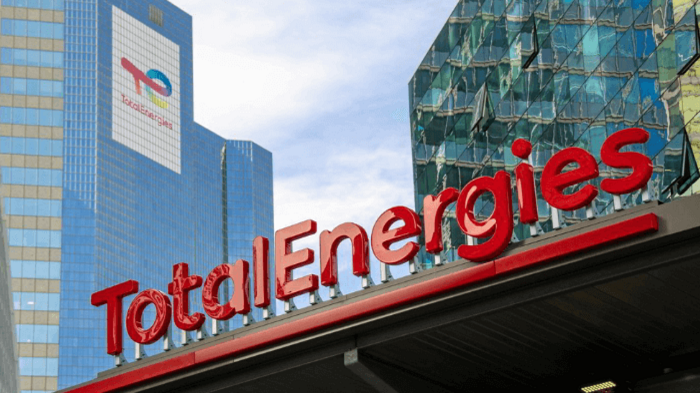To contribute to the public debate on the energy transition, TotalEnergies is publishing the 6th edition of its “TotalEnergies Energy Outlook”, which presents three scenarios for the possible evolution of the demand and the global energy system up to 2050.

TotalEnergies Energy Outlook 2024
This year, in addition to the Momentum and Rupture scenarios presented in previous editions of its Energy Outlook, TotalEnergies has developed a new scenario, Trends, which reflects the current trajectory of the various countries up to 2030 and the organisation’s anticipation of technological developments and public policies in line with current trends. This scenario enables TotalEnergies to present the expected evolution of the energy system up to 2050 in line with current trends and the efforts still required to achieve the objectives of the Paris Agreement.
Access to energy essential to meet development needs
Today, around 4.5 billion people have access to a level of energy that is below what is deemed necessary for satisfactory human development, particularly in terms of access to healthcare and education.
Demographic forecasts indicate that the world’s population will increase by 1.7 billion by 2050, in India and the Global South. Ensuring sufficient access to energy for the world’s entire population today requires tripling the energy available in the least developed countries. Taking into account their expected population growth, by 2050 they will need four times more energy than today. Our collective challenge is therefore to reduce greenhouse gas emissions while responding to the legitimate demand for more energy for the population of emerging countries.
An energy transition underway but which ought to be accelerated
Since 2000, we have experienced a decoupling between GDP growth and energy demand growth. Electricity has grown faster than the other energies, and renewables have accelerated their growth since 2015. However, demand for coal, which is often domestic and inexpensive, continues to grow, and energy intensity gains (1.4% per year observed over 2000-2022) remain below the ambition set at COP28 (3% to 4% per year).
Analysis by geographical zone shows that rising living standards, particularly in India and China, are the main drivers of the increase in energy demand in recent years.
Two major developments occurred in the last 20 years that will shape the energy transition: the shale gas and oil revolution in the United States has transformed the energy landscape in the United States and around the world; and a few low-carbon technologies, in particular solar panels and electric vehicles, have made sufficient progress to be deployed on a large scale and be cost-competitive for consumers, provided that, at the same time, electricity networks receive sufficient investment.
Three scenarios for the next 30 years
The “Trends” scenario reflects the current trajectory of the various countries up to 2030 and incorporates our anticipation of future technological and public policy developments in line with current trends. It accounts for the recent acceleration in the penetration of mature decarbonization technologies: solar and wind power to produce electricity, electric vehicles and heat pumps to use it, particularly in China. However, infrastructure constraints (in particular electricity grids) and geopolitical tensions are limiting their large-scale deployment. This scenario yields an estimated temperature increase between +2.6° and +2.7°C by 2100.
TotalEnergies’ “Momentum” scenario is a forward-looking approach integrating the decarbonisation strategies of NZ50 countries, as well as the NDCs (Nationally Determined Contributions) of other countries.
It implies: (i) electrification of final demand in NZ50 countries and China, (ii) phasing-out coal in NZ50 countries, a sharp reduction in China and only slight growth in this energy source in the Global South countries, (iii) the use of natural gas as a transitional energy source for electricity and industry in all countries, and (iv) the deployment of new energies in non-electrifiable sectors (e.g. decarbonised hydrogen in industry and transport, sustainable fuels in aviation and marine) in NZ50 countries and China.
In this scenario, fossil fuels still cover half of the growth in energy demand in the Global South, due to insufficient low-carbon investment. This scenario yields an estimated temperature increase between +2.2° and +2.3°C by 2100.
“Rupture” is a normative scenario designed to achieve a temperature increase of less than 2°C by 2100. For example, moving from Trends to Rupture requires an 80% increase in installed solar and wind power capacity in India and the Global South by 2030. Beyond 2040, all decarbonization levers are applied globally, in particular the deployment of new energies and CCUS. In this scenario, decarbonized technologies are deployed globally according to their merit curve. This scenario yields an estimated temperature increase between +1.7° and +1.8°C by 2100.
To move from Trends to Rupture, the world should collectively give priority to existing technologies offering an acceptable abatement cost. In particular, public decision-makers should step up international cooperation to ensure that the cheapest technologies are available globally, and that financial instruments adapted to developing countries are deployed.
“To keep pace with the growth in energy demand which is essential to the legitimate improvement in the standard of living of the emerging countries’ population while simultaneously reducing greenhouse gas emissions, public policies and the players in the energy chain must give priority to mature and sufficiently affordable low-carbon technologies and cooperate to deploy them across the globe. This is the way to combine economic and social development with the acceleration of the energy transition,” said Aurélien Hamelle, Managing Director Strategy & Sustainability.
